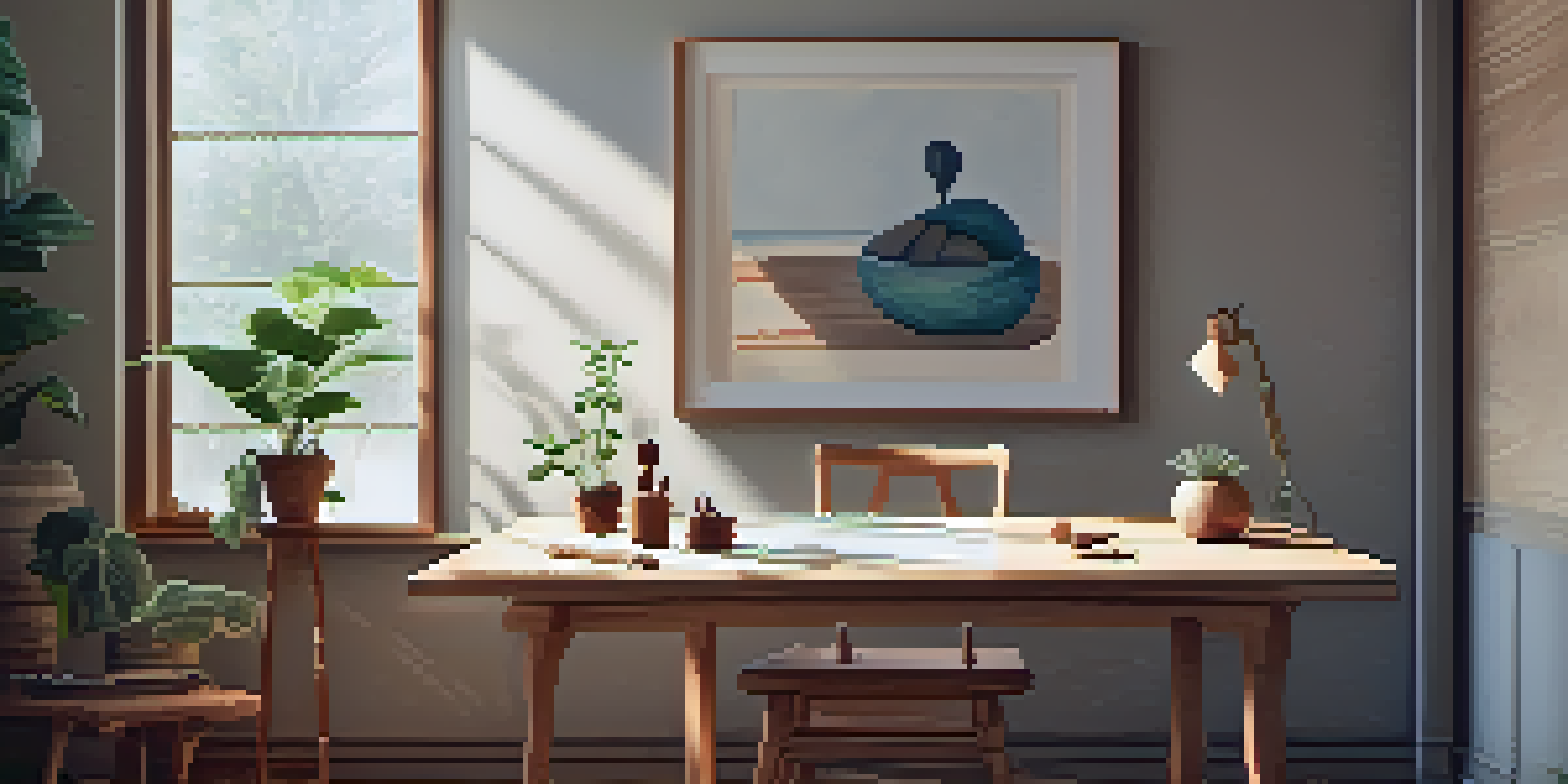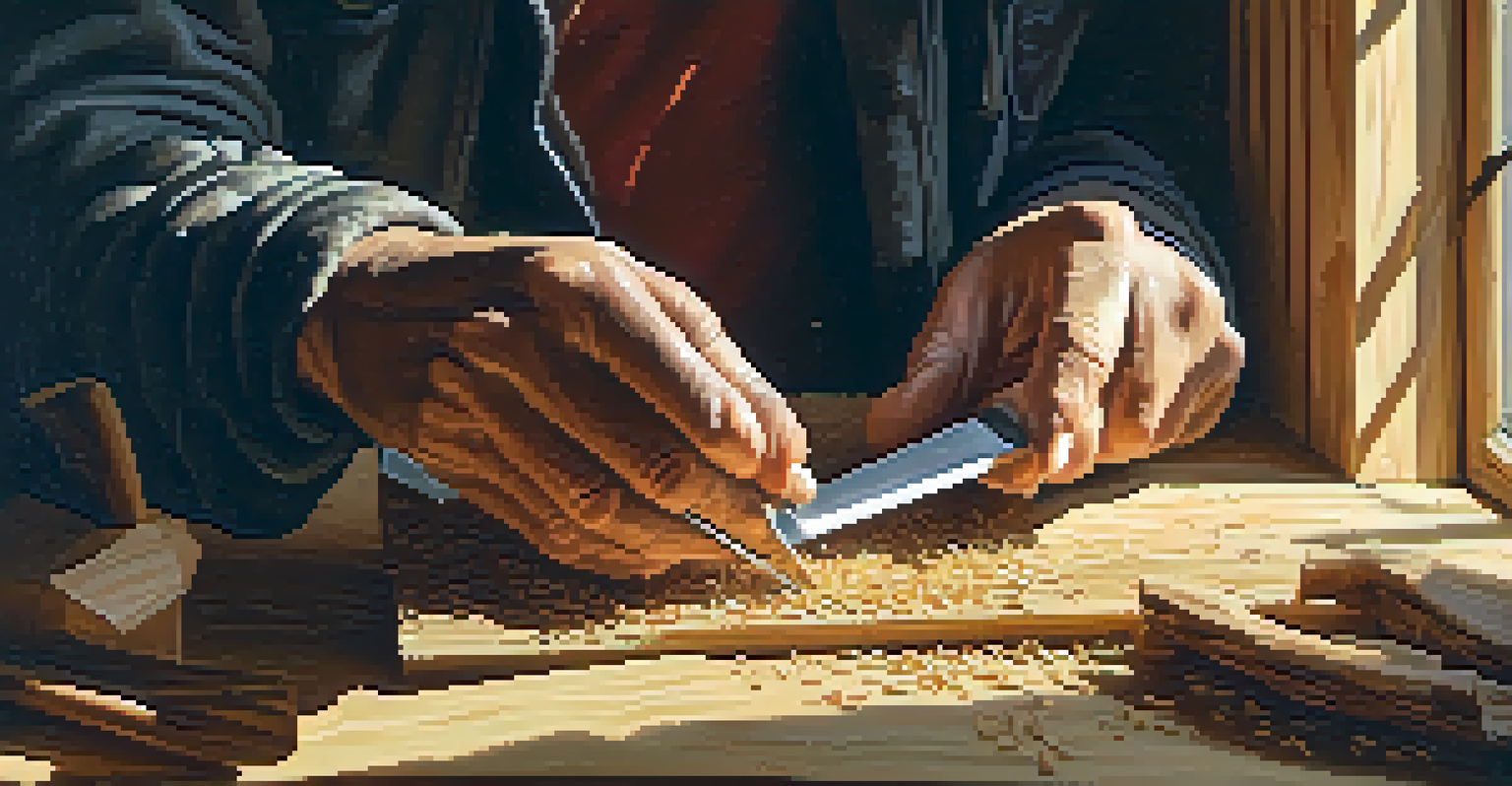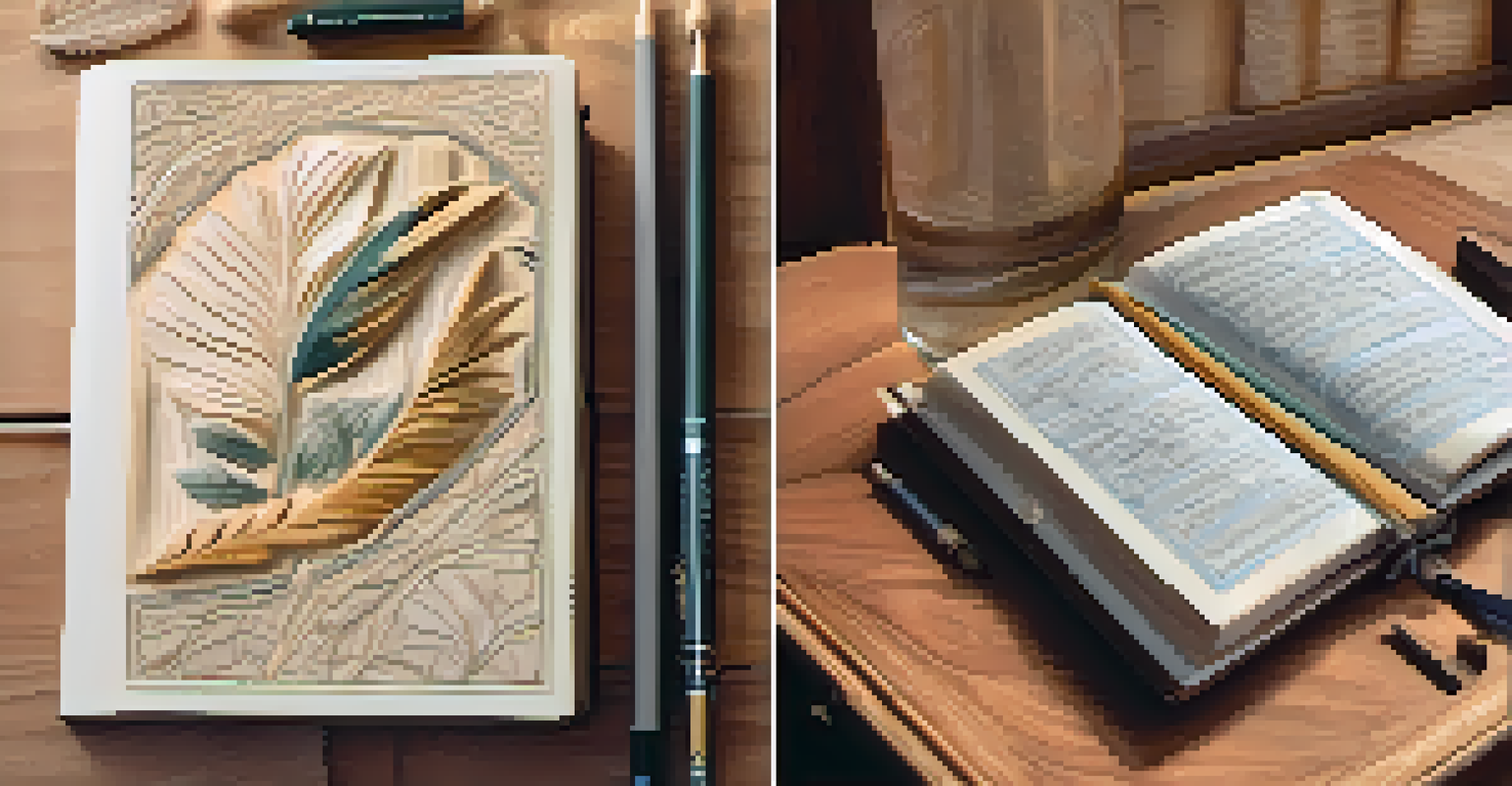Integrating Carving into Your Daily Mindfulness Routine

Understanding the Art of Carving and Mindfulness
Carving is more than just a creative outlet; it's a form of mindfulness. As you carve, your focus shifts to the flow of the material, the feel of the tools, and the rhythm of your movements. This immersive experience can help clear your mind of distractions and promote a sense of calm.
The process of creation is a journey of self-discovery.
Mindfulness, at its core, is about being present in the moment. By integrating carving into your daily routine, you can cultivate a deeper awareness not only of your craft but also of your thoughts and feelings. This synergy can enhance your overall well-being.
When you carve with intention, you can experience a meditative state. Each stroke becomes a way to connect with yourself and your surroundings, allowing for a richer mindfulness practice that transcends the act of carving itself.
Setting Up a Dedicated Carving Space
Creating a dedicated carving space is essential for fostering mindfulness. Choose a quiet spot in your home where you can focus solely on your craft without interruptions. This physical environment will support your mental space, making it easier to engage fully in the process.

Consider adding elements that enhance relaxation, such as soft lighting, calming music, or even plants. These details can create a soothing atmosphere that invites creativity and mindfulness. A comfortable chair and a sturdy table will also help you settle into your practice.
Carving Enhances Mindfulness
Engaging in carving allows for a meditative experience that fosters a deeper awareness of both the craft and one's thoughts.
Having a dedicated space allows you to establish a routine, making it easier to incorporate carving into your daily life. Over time, this space will become a sanctuary where you can escape from the hustle and bustle and reconnect with yourself.
Choosing the Right Tools for Mindful Carving
Selecting the right tools is crucial for a fulfilling carving experience. Consider investing in high-quality, comfortable tools that feel good in your hands. This connection to your tools can enhance your focus and make the crafting process more enjoyable.
Art enables us to find ourselves and lose ourselves at the same time.
Different tools can evoke different feelings and techniques, so explore what works best for you. Whether it's a simple carving knife or a set of chisels, having the right equipment can help you execute your designs with precision and ease, allowing you to fully immerse yourself in the moment.
Remember, the goal is not perfection but rather the joy of creation. As you carve with tools that resonate with you, you'll find that your mindfulness practice naturally deepens, allowing for a richer exploration of your artistic side.
Incorporating Mindfulness Techniques While Carving
To make the most of your carving practice, incorporate mindfulness techniques such as deep breathing and visualization. Before you begin, take a few moments to center yourself with deep breaths, inhaling calm and exhaling tension. This sets a peaceful tone for your carving session.
As you carve, focus on the sensations in your hands and the sounds of the tools against the material. Notice how the wood or stone responds to your movements. This heightened awareness can create a meditative experience, where every action is deliberate and intentional.
Create a Dedicated Space
Establishing a quiet, dedicated carving space supports focus and encourages a consistent, mindful practice.
You might also visualize your completed piece or the emotions you wish to express through your work. This practice not only enhances your carving but deepens your connection to the process, allowing you to create with both intention and joy.
Creating a Daily Carving Routine
Establishing a daily carving routine can help solidify your mindfulness practice. Start with a few minutes each day and gradually increase the time as you become more comfortable. Consistency is key, as it transforms carving into a mindful habit rather than just a sporadic activity.
Choose a specific time of day that works best for you, whether it’s early morning or late evening. This regularity can reinforce the calming benefits of carving, making it a cherished part of your day that you look forward to.
Remember, the goal isn't to carve a masterpiece every day but to enjoy the journey. Each session can be seen as an opportunity to unwind, reflect, and grow, both as a carver and as a mindful individual.
Reflecting on Your Carving Experience
After each carving session, take a moment to reflect on your experience. What did you enjoy? What challenges did you face? This reflection can help deepen your understanding of both your craft and your emotional state, enhancing your mindfulness practice.
Consider keeping a journal where you document your carving sessions. Write down your thoughts, feelings, and any insights gained during the process. This practice can serve as a powerful tool for personal growth and mindfulness.
Reflect on Your Carving Journey
Taking time to reflect after each session enhances understanding and promotes personal growth in your carving practice.
By reflecting on your experiences, you can better understand how carving impacts your mental well-being, allowing you to adjust your routine as needed. This ongoing dialogue with yourself can lead to a more fulfilling and mindful carving journey.
Sharing Your Carving Journey with Others
Sharing your carving journey can enhance your mindfulness practice and connect you with like-minded individuals. Consider joining a local or online carving community where you can exchange ideas, techniques, and experiences. This sense of belonging can enrich your creative process.
Engaging with others allows you to celebrate your successes and learn from challenges. Whether through social media or carving clubs, sharing your work fosters a supportive environment that encourages growth and exploration.

Remember, the act of sharing is a form of mindfulness in itself. It invites you to reflect on your journey and appreciate the connections made through the art of carving, turning your practice into a collective experience.